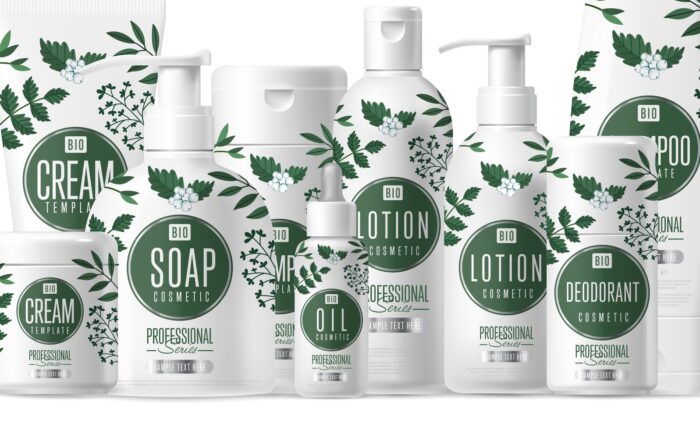A Quick Guide to Good Hygiene Practices
Cleaner Plants, Safer Products: A Quick Guide to Hygiene Excellence
In the world of food manufacturing, safety and quality are non-negotiable. Every day, millions of consumers place their trust in the hands of manufacturers, expecting that the food on their tables is safe, clean, and of the highest quality standard. It is a trust that must be earned through meticulous attention to hygiene and sanitation—principles that form the backbone of a robust food safety plan. As John Ruskin wisely noted, “Quality is never an accident. It is always the result of intelligent effort. There must be the will to produce a superior thing.” This intelligent effort begins with an unwavering commitment to a culture of hygiene, ensuring that every plant operates at the peak of cleanliness and efficiency.
The journey toward hygiene excellence is not just about meeting regulatory requirements; it is about instilling a mindset of continuous improvement and proactive care, from the production line to the final product. This guide will explore how maintaining cleaner plants translates into safer, superior products, and ultimately, greater consumer confidence. It is imperative that food manufacturers continuously assess the impact of their hygiene culture, recognizing how it directly influences the elevation of quality standards. A strong hygiene culture not only ensures compliance with safety regulations but also fosters an environment of excellence, where every aspect of production is scrutinized and improved.
The U.S. Food and Drug Administration (FDA)’s Current Good Manufacturing Practice, Hazard Analysis, and Risk-Based Preventive Controls for Human Food (21 CFR Part 117), World Health Organization (WHO), and International Organization for Standardization (ISO) specifically ISO 22000:2018 Food Safety Management Systems define requirements for any organization in the food chain to provide specific guidance to standardize practices. Various aspects play a significant role in achieving hygiene excellence, regardless of the size of the facility or the type of food product being processed. Here is small summary of different aspects that are critical in maintaining a safe and clean manufacturing environment:
Handwashing
Proper handwashing is one of the most critical hygiene practices within food manufacturing plants, as hands are a primary source of contamination. Effective hand hygiene is crucial for preventing the transfer of pathogens and contaminants from workers’ hands to food products, equipment, and food-contact surfaces.
- Hygiene Significance: Regular and thorough handwashing removes dirt, food particles, and potentially harmful bacteria or viruses that may be present on the skin. Hands should be washed before starting work, after breaks, after using the restroom, and anytime contamination is possible.
- Handwashing Best Practices: Effective handwashing involves using running water, liquid soap, and disposable towels for drying. A minimum 20-second wash that includes scrubbing all parts of the hands—backs, palms, fingers, and under the nails—is essential to achieve thorough cleaning.
- Handwashing Stations: Facilities must provide accessible handwashing stations throughout the plant, particularly near entrances to processing areas, restrooms, and areas where raw materials are handled.
Clothing
Appropriate clothing in food manufacturing plants acts as a barrier to contaminants and helps maintain a clean environment. This includes both work-specific attire and accessories such as hair coverings or footwear.
- Hygiene Significance: Clothing protects food products from physical contamination, such as loose fibers, and microbiological contamination, which may be introduced from the external environment or the worker’s body.
- Uniform Requirements: Workers must wear clean, dedicated uniforms that are regularly washed and sanitized. Clothing should cover as much of the body as possible to minimize exposure, and materials used for uniforms should be suitable for the work environment (e.g., lint-free).
- Hair and Beard Restraints: Hairnets, beard nets, and other coverings are required to prevent hair from falling into food products and to limit the spread of microbes. These coverings must be worn properly and replaced frequently to maintain their effectiveness.
Personal Protective Equipment (PPE)
PPE includes protective clothing and accessories such as gloves, face masks, aprons, and goggles that help to minimize contamination risks.
- Hygiene Significance: PPE serves as a physical barrier to protect both the worker and the product from contamination. Gloves, for example, can prevent direct hand contact with food, while face masks help reduce the risk of airborne contaminants.
- PPE Use and Maintenance: Proper training on the correct use of PPE is essential. It should be worn, removed, and replaced correctly to prevent contamination of the food or environment. For instance, gloves should be changed frequently and never used as a substitute for handwashing.
- PPE and Cross-Contamination Prevention: PPE also plays a key role in preventing cross-contamination, especially when dealing with allergens, raw materials, and ready-to-eat products. Plant policies should clearly define when and where PPE is required.
Jewelry
The wearing of jewelry in food manufacturing environments poses significant risks for both physical and microbial contamination. Jewelry can harbor bacteria, fall into food products, or cause injury to workers if caught in machinery.
- Hygiene Significance: Jewelry such as rings, bracelets, watches, and earrings are prohibited in processing areas because they can trap bacteria and food residues, creating an environment for microbial growth. They can also pose a physical hazard if they fall into the product or come into contact with food-contact surfaces.
- Policy on Jewelry and Personal Items: Plants should enforce strict policies on removing all jewelry before entering food-handling areas. If the wearing of jewelry is required for religious or medical reasons, alternatives (such as covering with gloves or wristbands) should be considered.
- Exceptions and Alternatives: Simple, non-contaminating items like smooth, plain wedding bands may be allowed in some cases, but policies must be clear and uniformly enforced.
Health Conditions
Monitoring the health of employees is crucial to preventing the transmission of foodborne illnesses. Sick employees can be a source of microbial contamination and present a risk to food safety.
- Hygiene Significance: Workers who are ill with symptoms such as diarrhea, vomiting, fever, jaundice, or have open wounds are at higher risk of contaminating food products. It is critical that employees report any illness or symptoms immediately.
- Employee Health Screening and Policies: Health policies should be in place that requires employees to undergo regular health checks, report illnesses, and, when necessary, be excluded from food handling duties until they are no longer a risk.
- Training on Health and Food Safety: Ongoing training programs should educate workers on recognizing symptoms of foodborne illnesses and understanding the impact their health can have on food safety.
By focusing on these aspects—handwashing, appropriate clothing, PPE use, restriction of jewelry, and managing health conditions—food manufacturing plants can ensure hygiene excellence. Proper implementation not only ensures compliance with food safety regulations but also fosters a culture of care and responsibility that significantly reduces contamination risks, promotes product quality, and builds consumer trust.
References:
- https://www.iso.org/standard/65464.html
- https://www.ecfr.gov/current/title-21/chapter-I/subchapter-B/part-117
- https://inspection.canada.ca/en/preventive-controls/cleaning-and-sanitation-program
About MCS Associates Food Experts and how they can help you!
MCS Associates is an internationally respected regulatory affairs consulting group specializing in the North American marketplace for the past 40 years. Our niche is proving pragmatic, economic solutions to regulatory challenges. Our clients appreciate our responsiveness and passion to create solutions.
Our team of food safety experts can support you with development of a robust and customized Preventive Controls (PC’s) as prescribed in Safe Food for Canadians Regulations (SFCR) which includes but not limited to establishing cost-effective control measures and testing parameters to verify the authenticity of your products. In addition, they can support you in:
- Foreign Supplier Compliance Verification
- GAP assessment of your current food safety and quality management system
- Establishing effective risk assessment strategies
- Communication with Regulatory Authorities.
To learn more please contact us at: enquires@mcs-associates.com
#FoodSafety #ISO22000 #HygieneExcellence #FoodManufacturing #QualityControl #FoodSafetyManagement #HACCP #SafeFoodProduction #FoodStandards #GMP #FoodIndustry #FoodChainSafety #QualityAssurance #SanitationStandards #FoodCompliance #SupplyChainSafety #FoodSafetyCulture #FoodSafetyRegulations #RiskManagement #FSMS #PrerequisitePrograms #FoodQuality #ConsumerSafety #FoodProcessing #FoodSafetyPractices






